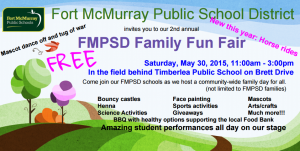Did You Know…? The Great Wall of China, including all sections, was built over a period spanning 2000 years.
Good evening,
Today the students continued their work on their Wetlands research papers. Students reviewed the body sentences that they wrote yesterday. They then had to create a topic sentence that would introduce the main points of their paragraphs, and a concluding sentence that would help to summarize the main points of their paragraphs. Don’t forget, often the topic sentence is what hooks your reader. Try and make it interesting! Students were also responsible to “Put it All Together” today. What we mean by that is that students had to create a neat second draft of their paragraphs. Tomorrow we start working on new paragraphs with new topics!
In Math today, students began looking at double-bar graphs. We modeled building a double bar graph together on the board, discussing the important attributes (eg. title, labelled x-axis, labelled y-axis, scale, legend). Students then worked in small groups to complete a double-bar graph. Finally, students began working on individual practice problems. Students will continue with these problems on Thursday.
In Science we completed our study of Classroom Chemistry. Today students were able to use some litmus paper to determine if certain liquids were acids or bases. Today students were using blue litmus paper. When placed in an acid, blue litmus paper changes to a reddish colour. It remains blue in the presence of bases or neutrals. Students tested vinegar, lemon juice, and water. The vinegar and lemon juice we quickly realized were acids by how quickly the blue litmus paper changed. However, the water left the blue paper blue. This could mean that it is a base or a neutral. We already knew from last week that water was neutral, but if we hadn’t known that information, we would have had to do further testing. A different type of litmus paper may have helped. Some litmus paper can help you to determine pH (see the link on the right). We could also have used red litmus paper. Red litmus paper turns blue in the presence of a base and stays red in the presence of acids and neutrals. The red litmus paper would have helped us to further identify the water as a base or a neutral substance. Today we finished off by having the students do some investigating. They were given four white powders. They then tested the powders with each of the following: vinegar, water, iodine. Students recorded their observations in a charge, and then using these observations determined the white powders. The first was baking soda. We knew this because it reacted with baking soda. The second was corn starch. We were able to quickly identify this because the iodine turned a dark blackish purple. Finally, we looked at the alum powder and the salt. We actually could not distinguish between these two using only the 3 tests designed above. Students discussed different tests they could do and we discussed as a class how difficulty it can be to determine substance identities. Often multiple tests need to be run to be conclusive. Students will be having a quiz on reactions and acids and bases this upcoming Monday.
Agenda:
Read 20 minutes
Language Arts:
- Wetlands Paragraphs (Second Draft) – Thursday
Math:
- Math Help – Wednesday (3:00-4:00 pm)
- Mathletics Meeting – TBD
Google Classroom Form – ASAP
Grade 5/6 Floor Hockey – Monday (3:00-4:00 pm)
Yearbook Orders – May 29th ( ybpay.lifetouch.com and enter Yearbook ID code: 10359315)
Mega Boyz – May 27th (Permission Forms ASAP)
Always Changing Unit – May 27th, girls (Permission Forms ASAP)
* More information on this unit can be found at: http://www.phecanada.ca/programs/always-changing/vibrant-faces/always-changing

